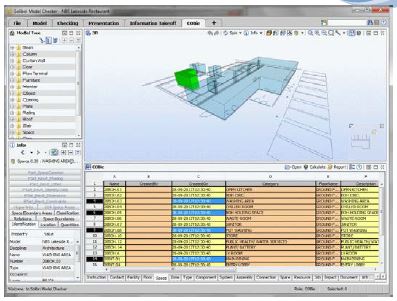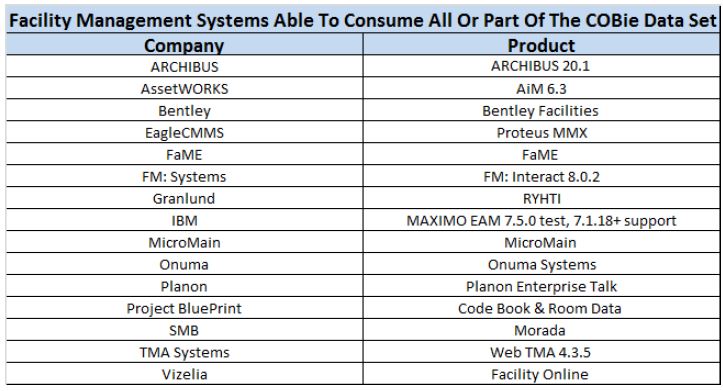|
June 2013
Article
AutomatedBuildings.com
|
[an error occurred while processing this directive]
(Click
Message to Learn More)
|
|
Modeling Building Automation and
Control Systems
Enrich the data with
digital relationships within the building, coordinate it with other
designers and finally populate our facility management systems.
|

Jim
Sinopoli PE, LEED BD+C, RCCD
Managing
Principal,
Smart
Buildings LLC
Contributing Editor
|
Many building owners
and facility managers lack good documentation for
their automation control systems. Documentation has value; lack of
system documentation can cost an organization and will increase risk.
Lack of documentation means troubleshooting and work orders take
longer, are more expensive and it extends the time it takes to resolve
issues for tenants or occupants. It also may mean preventative
maintenance isn’t done because you don’t know what the PM schedule is,
possibly shortening the life of the equipment. Or it may mean that
facility personnel really do know a lot about their systems but if they
move to another organization or company or retire, all that knowledge
or “system documentation” leaves with them.
This
lack of documentation for automation and control systems is caused
by inadequate organization and planning in the handoff from
construction to building operations and the fact that much of the
documentation is in a paper format.
Help is on its
way. The buildingSMART alliance with the input of the US
Army Corps of Engineers has developed and proposed a data structure for
representing information related to automation and controls. It falls
under a large umbrella called Building Information Modeling or BIM.
BIM
If you’ve had any
involvement in new building design and construction
you’re probably familiar with BIM. You may be aware or exposed to the
3-D modeling of a building and its components and understand the value
it can provide in avoiding potential “collisions” between the designs
created by different engineers. Likewise, the usefulness this modeling
can provide to contractors in fabricating building systems and
components. Major designers and construction companies have embraced
BIM and rightfully so; it can reduce change orders, assist in
maintaining schedules and generally produce better buildings.
 The larger picture and
the utilization of BIM should be an approach of
a life-cycle asset management tool. Such a tool is used in creating and
acquiring data during design and construction which is then delivered
to facility management. It’s the building operations that will be 85 to
95 percent of a building’s lifecycle.
The larger picture and
the utilization of BIM should be an approach of
a life-cycle asset management tool. Such a tool is used in creating and
acquiring data during design and construction which is then delivered
to facility management. It’s the building operations that will be 85 to
95 percent of a building’s lifecycle.
To facilitate the
exchange of information from design and construction to building
operation, a standard called Construction Operations Building
Information Exchange (COBie) was developed by a laboratory of the US
Army Corps of Engineers.
COBie is a format
of data for building assets. It’s associated with BIM, but doesn’t
involve spatial modeling. It is part of the National Building
Information Model. COBie may include data such as preventative
maintenance schedules, model numbers, warranty information, product
data sheets, and everything needed to operate and maintain the
particular asset.
Industry
Foundation Class (IFC)
The modeling of
automation systems involves the development of a specific IFC for
automation and control systems. An IFC is an open and neutral data
model that describes building and construction industry data to
facilitate interoperability of the data between designers, contractors
and facility management. The IFC model specification is registered by
the International Organization for Standardization (ISO) and is an
official International Standard (ISO 16739:2013). The effort is
referred to as Building Automation Modeling Information Exchange or
BAMie.
The proposed IFC
for the Buildings Controls Domain has core entities to represent
automation and control systems. During the design phase, when different
design elements are being determined, the data exchange between
automation and control systems can be coordinated with other design
elements. The proposed domain models for automation systems are
controllers, sensors, actuators, alarms and instruments, and control
elements that have integrated panels and indicators. The model
definitions are organized into addresses, configurations, connections,
performance and components and types.
- Connections - The
model definition of “connections” has logical and
physical connections. The “IfcRelationship entity” can then model the
connections. Inputs and outputs for devices such as controllers,
actuators, thermostats and sensors can be mapped.
- Components and Types
– Initially design components may be generic
but at some stage of a project specific product data is needed and a
product template can be used to organize the data. In this case an
“IfcType Object” entity may be used to acquire product specifications
and “IfcDocument References” can used to provide links to installation
and O&M manuals.
- Addresses – This
model definition provides an addressing format for
specific data points. It also seems like an area where Project Haystack
could add some value. Project Haystack is an open source initiative
that has developed naming conventions and taxonomies for building
equipment and operational data. Standardizing addressing formats and
“binding” addresses of data points to other objects in a building or
buildings facilitates integration of the data and enriches the context
of the data point by incorporating related data.
- Configuration – BAMie
is ambitious in documenting automation and
control system configurations. The idea is to make the information
exchange between the system contractor, other designers, contractors
and the facility manager or building owner more efficient.
Configuration data can include data such as set points for specific
building spaces, schedules, even alarm conditions. The usefulness of
documenting system configurations for information exchange may depend
on the specific automation and control system, specifically the
management workstations of the system, where configurations can be set.
- Performance – The
proposed model definition for performance is
interesting. Because BAMie data includes relationships between objects
and artifacts and can produce a fluent exchange of data, it can
facilitate the creation of performance metrics that an automation and
control system would not be able to do, for example creating 3D models
or color coded floor plans of energy consumption trends over a time
series.
[an error occurred while processing this directive]The
building automation industry is abuzz with “data analytics”.
Analytic software solutions for complex HVAC systems have shown
substantial benefits in operations and energy management. The key is
data. The proposed BAMie is not only a repository for comprehensive
data in automation and control systems, but it provides a means that
the data can be easily exchanged with other systems and other various
colleagues involved in design, construction and operation of the
building.
The building
automation industry needs to embrace and support the BAMie
effort. Construction Directors and Facility Managers should request
designers and contractors provide system data and submittals in
electronic format.
Finally, the
industry experience with BIM and information exchange to
date is somewhat isolated to just architects, design engineers and
construction companies. Not many facility management organizations have
consumed and used BIM data despite the fact that the greatest benefits
of BIM are in building operations. There are a number of facility
management systems that can import BIM and populate FM applications
such as asset management, preventative maintenance and document
management.

If we can acquire
automation and control system data digitally in the
proposed format from the start of a project, enrich the data with
digital relationships within the building, coordinate it with other
designers and finally populate our facility management systems, we will
be on the road to better building performance.
For more
information, write us at info@smart-buildings.com .
Photos courtesy of Google and Bing Images
footer
[an error occurred while processing this directive]
[Click Banner To Learn More]
[Home Page] [The
Automator] [About] [Subscribe
] [Contact
Us]
